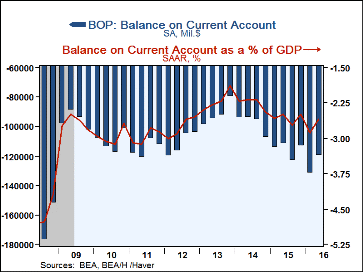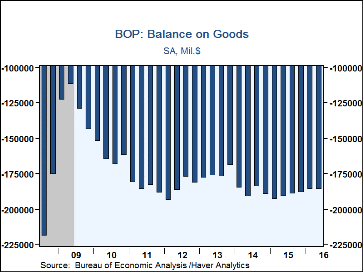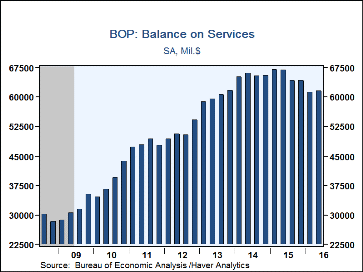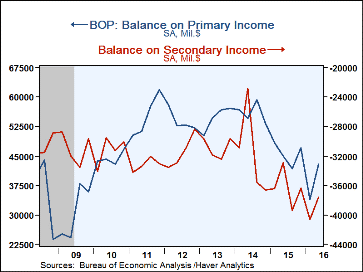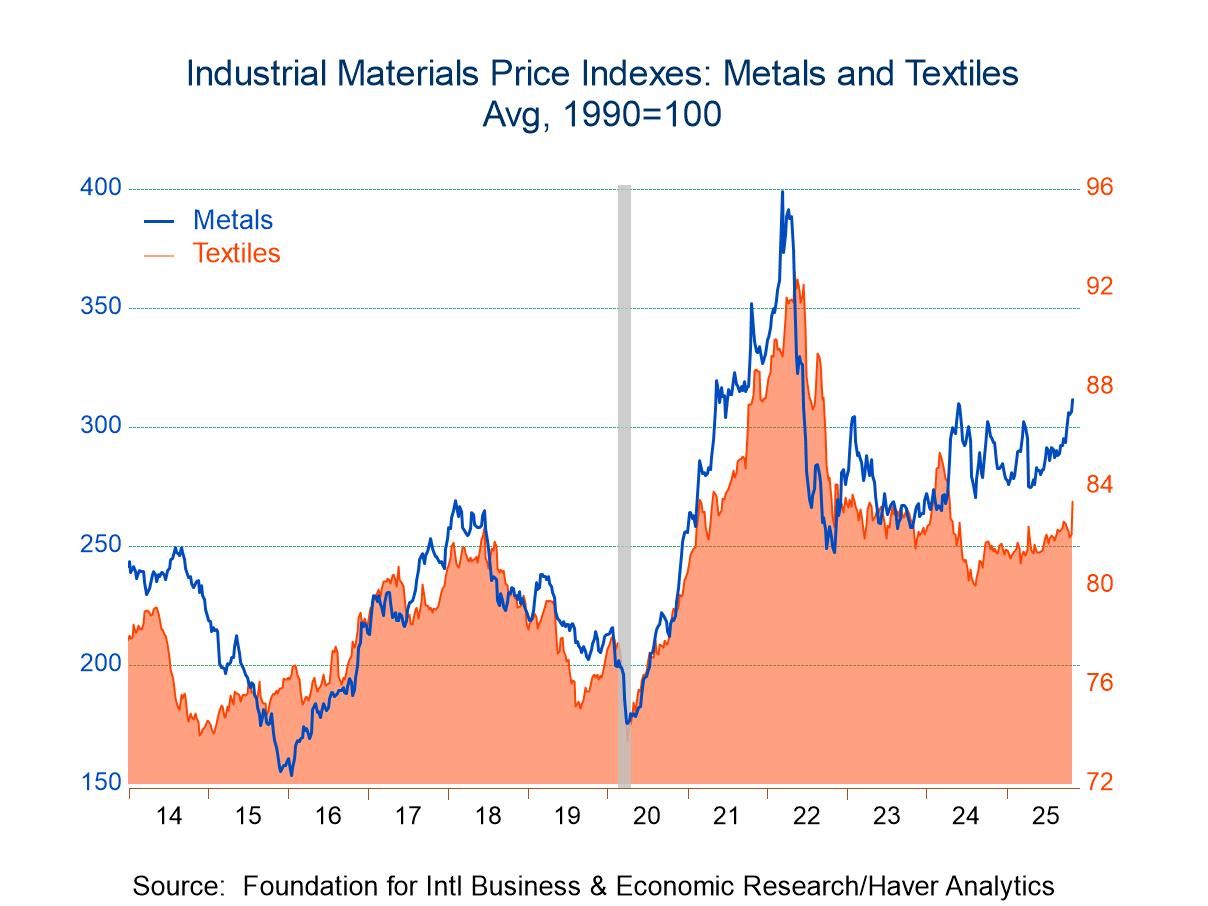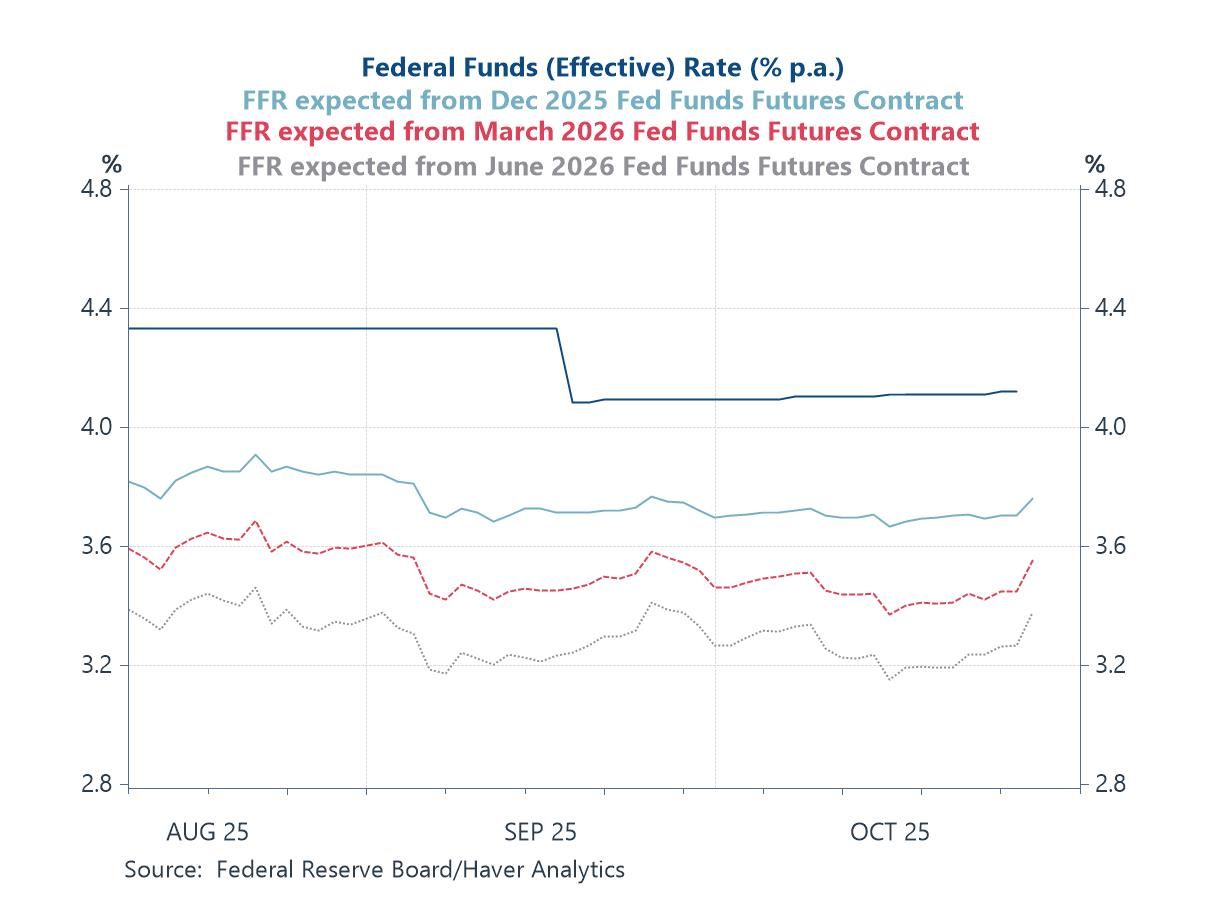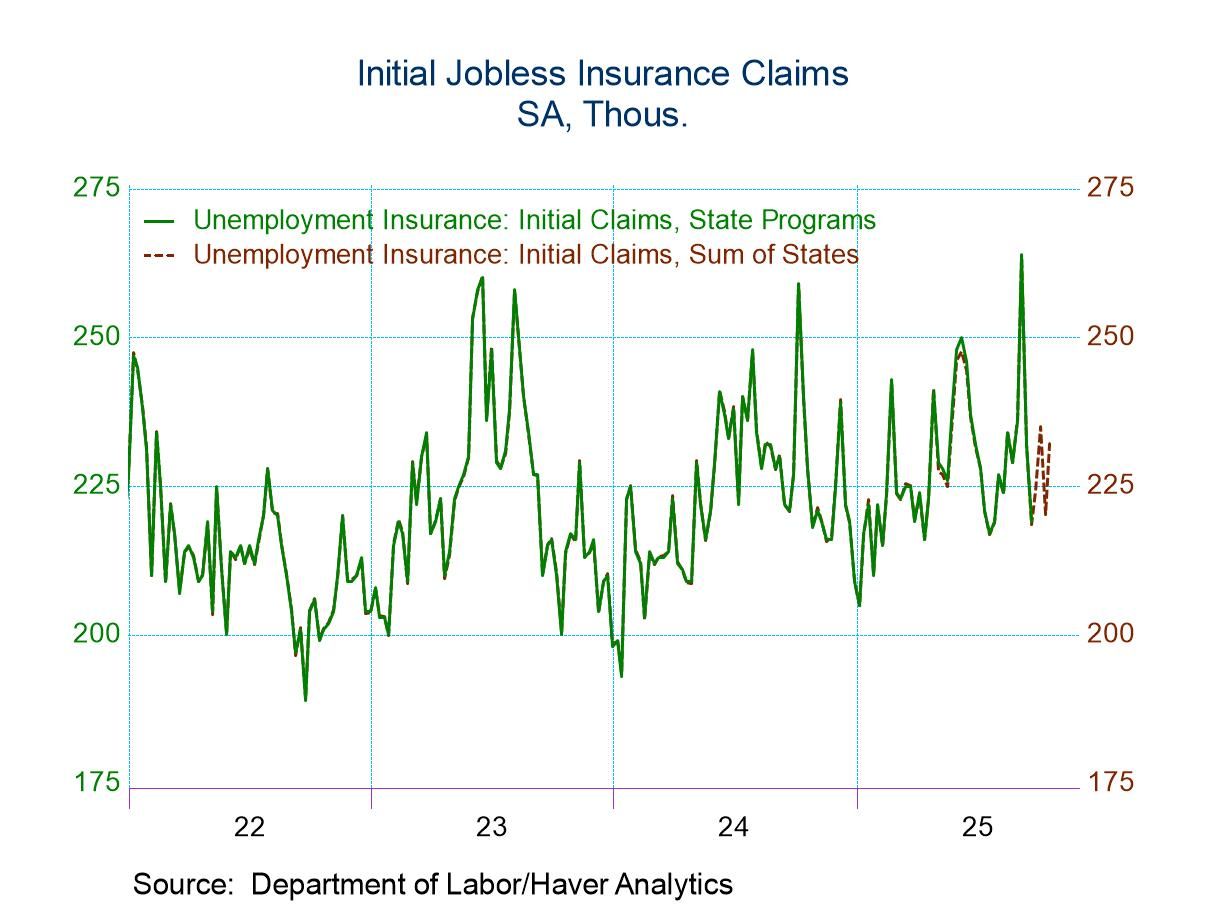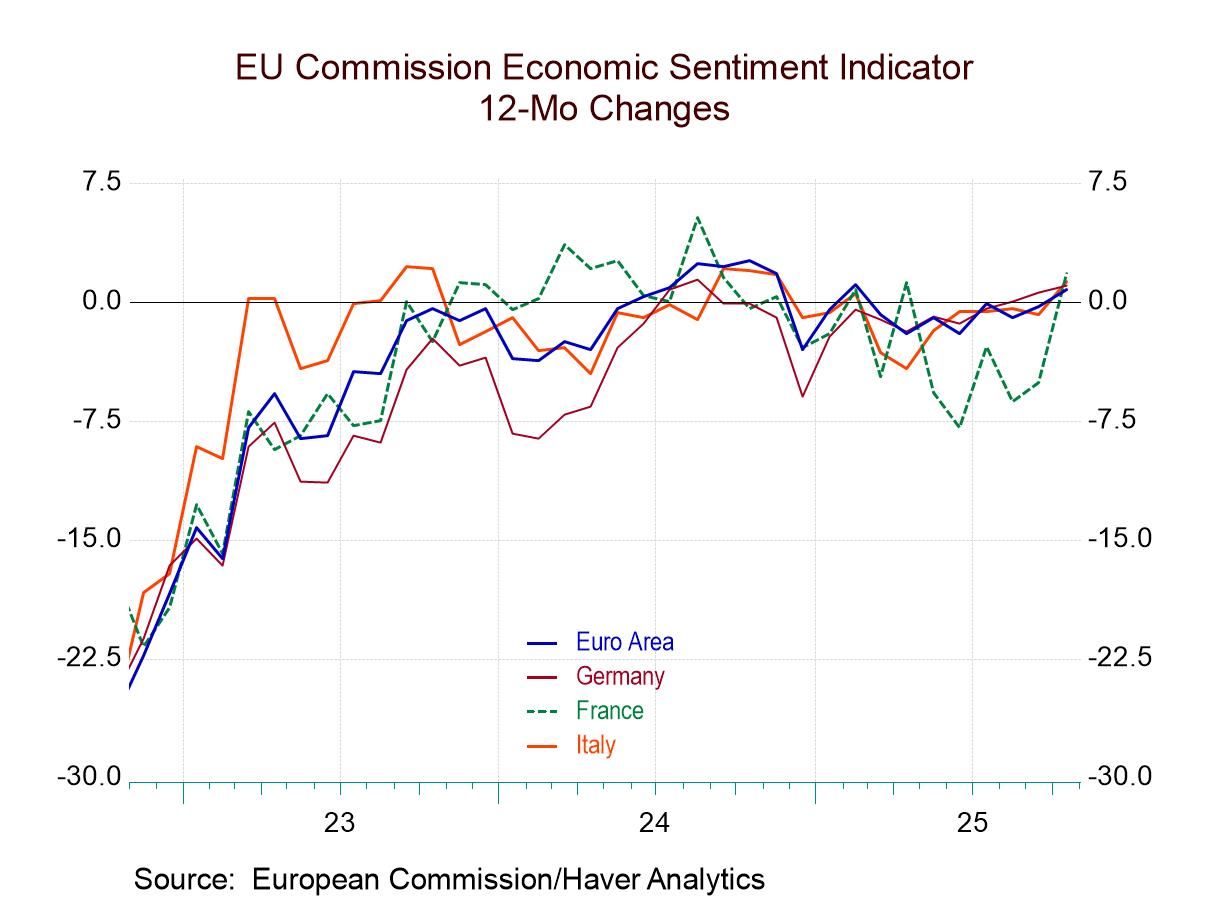 Global| Sep 16 2016
Global| Sep 16 2016U.S. Current Account Deficit Narrows
by:Tom Moeller
|in:Economy in Brief
Summary
The U.S. current account deficit eased to $119.9 billion in the second quarter from $131.8 billion Q1'16, revised from -$124.7 billion. The Q2 deficit figure compared to $121.9 billion expected in the Action Economics Forecast Survey. [...]
The U.S. current account deficit eased to $119.9 billion in the second quarter from $131.8 billion Q1'16, revised from -$124.7 billion. The Q2 deficit figure compared to $121.9 billion expected in the Action Economics Forecast Survey. The deficit has been trending sideways since early last year. As a percent of GDP, the deficit last quarter of 2.6% was less than half the size in late 2006.
The modest narrowing in the deficit last quarter was due to a 0.5% rise in services exports (-1.5% y/y) which outpaced the 0.4% gain in imports (+2.1% y/y). The surplus on services trade has nevertheless fallen to $61.5 billion from its peak of $67.0 billion in Q1'15. The balance on merchandise trade has been trending sideways, last quarter to $186.7 billion. Exports rose 1.7% (-6.2% y/y) and imports gained 1.2% (-4.8% y/y). The surplus on primary income fell sharply to $42.9 billion from its Q4'13 peak of $57.2 billion. The deficit on secondary income has been trending lower since early 2014.
Balance of Payments data are in Haver's USINT database, with summaries available in USECON. The expectations figure is in the AS1REPNA database.
| US Balance of Payments SA | Q2'16 | Q1'16 | Q4'15 | Y/Y | 2015 | 2014 | 2013 |
|---|---|---|---|---|---|---|---|
| Current Account Balance ($ Billion) | -119.9 | -131.8 | -113.4 | -111.9 | -463.0 | -392.1 | -366.4 |
| Deficit % of GDP | 2.6 | 2.9 | 2.5 | 2.5 | 2.6 | 2.3 | 2.2 |
| Balance on Goods ($ Billion) | -186.7 | -186.3 | -188.4 | -190.9 | -762.6 | -752.2 | -702.2 |
| Exports | 1.7% | -3.0% | -3.2% | -6.2% | -7.5% | 2.6% | 1.9% |
| Imports | 1.2% | -2.4% | -2.3% | -4.8% | -4.7% | 4.0% | -0.4% |
| Balance on Services ($ Billion) | 61.5 | 61.1 | 64.2 | 66.8 | 262.2 | 262.0 | 240.4 |
| Exports | 0.5% | -1.2% | -0.1% | -1.5% | 1.0% | 6.0% | 6.9% |
| Imports | 0.4% | 0.7% | -0.2% | 2.1% | 1.5% | 4.4% | 2.0% |
| Balance on Primary Income ($ Billion) | 42.9 | 34.0 | 47.1 | 45.1 | 182.4 | 224.0 | 219.0 |
| Balance on Secondary Income ($ Billion) | -37.6 | -40.6 | -36.3 | -32.9 | -145.0 | -125.9 | -123.5 |
Tom Moeller
AuthorMore in Author Profile »Prior to joining Haver Analytics in 2000, Mr. Moeller worked as the Economist at Chancellor Capital Management from 1985 to 1999. There, he developed comprehensive economic forecasts and interpreted economic data for equity and fixed income portfolio managers. Also at Chancellor, Mr. Moeller worked as an equity analyst and was responsible for researching and rating companies in the economically sensitive automobile and housing industries for investment in Chancellor’s equity portfolio. Prior to joining Chancellor, Mr. Moeller was an Economist at Citibank from 1979 to 1984. He also analyzed pricing behavior in the metals industry for the Council on Wage and Price Stability in Washington, D.C. In 1999, Mr. Moeller received the award for most accurate forecast from the Forecasters' Club of New York. From 1990 to 1992 he was President of the New York Association for Business Economists. Mr. Moeller earned an M.B.A. in Finance from Fordham University, where he graduated in 1987. He holds a Bachelor of Arts in Economics from George Washington University.


